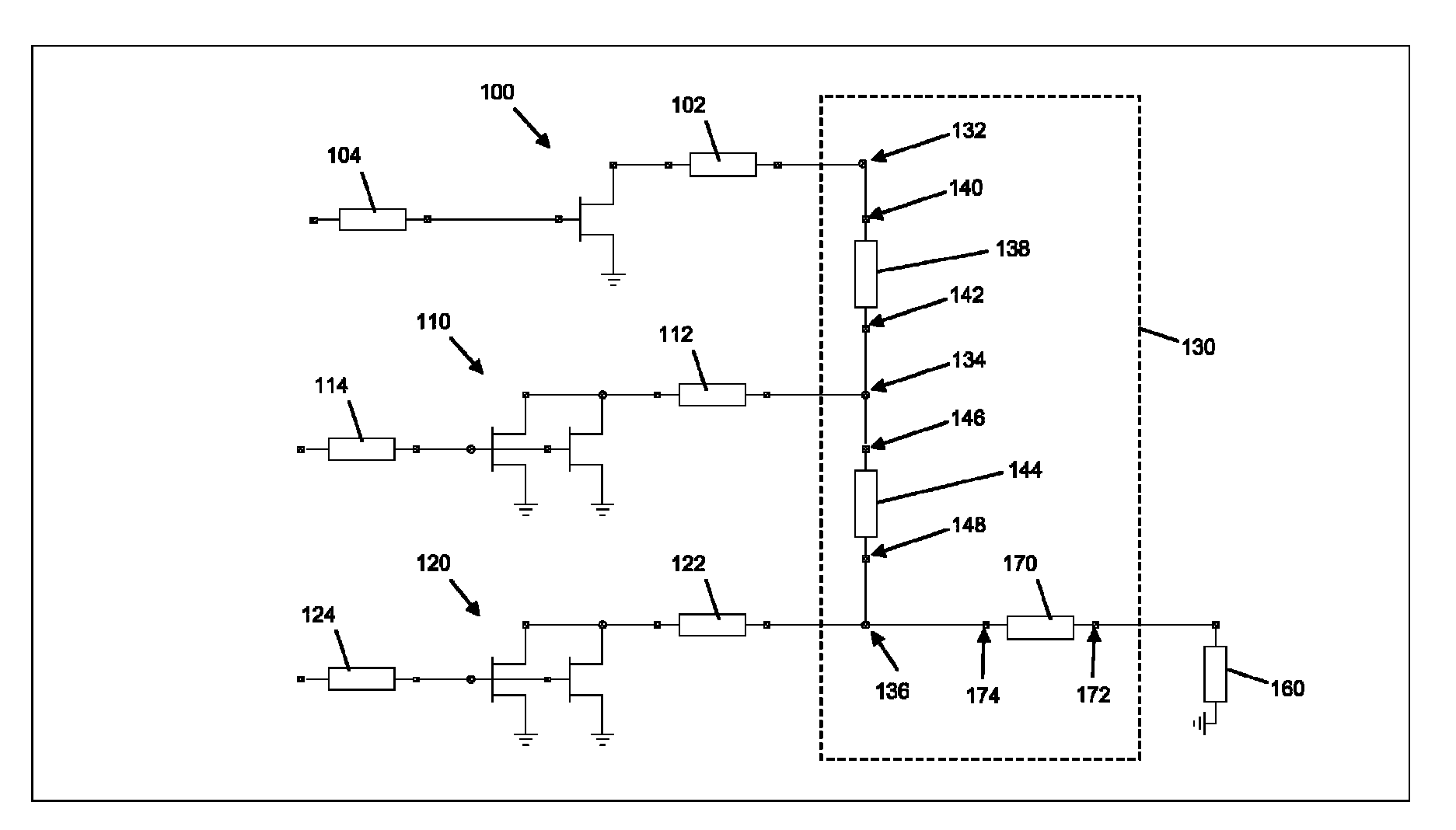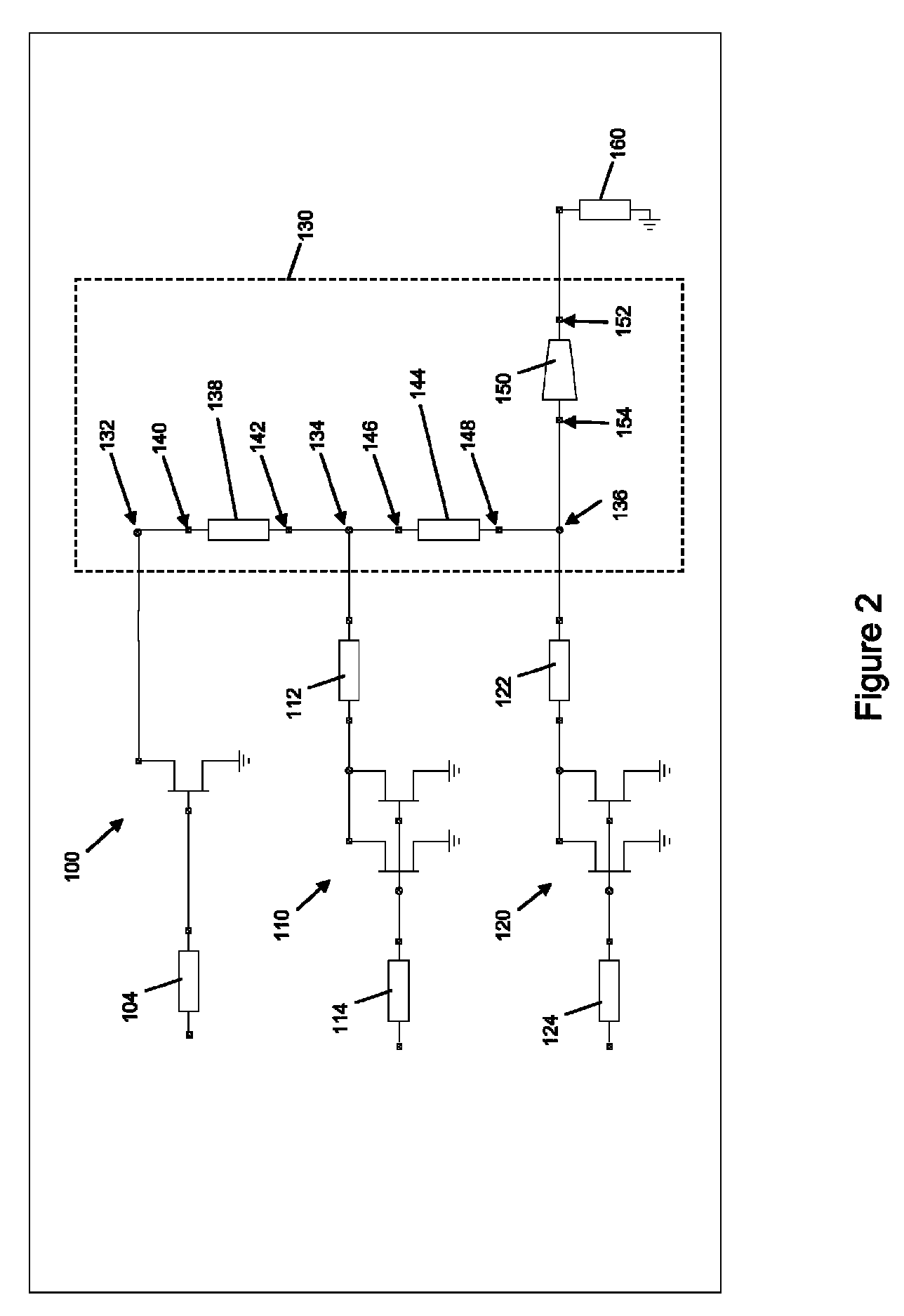Wideband Doherty amplifier circuit with impedance combiner
a doherty amplifier and combiner technology, applied in amplifiers, amplifiers with semiconductor devices/discharge tubes, amplifiers, etc., can solve the problems of narrow amplifiers, inability to achieve high-asymmetric ratio between main and peak amplifiers, and inherent degradation of peak efficiency of doherty architecture, etc., to achieve constant power versus frequency and constant efficiency
- Summary
- Abstract
- Description
- Claims
- Application Information
AI Technical Summary
Benefits of technology
Problems solved by technology
Method used
Image
Examples
Embodiment Construction
[0018]FIG. 1 illustrates an embodiment of a three way wideband Doherty amplifier circuit which includes a main amplifier 100 biased at Class B or AB mode, a first peaking amplifier 110 biased at Class C mode, a second peaking amplifier 120 biased at Class C mode, and a constant impedance combiner 130. Each amplifier 100, 110, 120 includes one or more active devices and may also include a respective output matching device 102, 112, 122. At low power levels, only the main amplifier 100 is operational. The efficiency of the main amplifier 100 increases as the power level increases. The main amplifier 100 eventually reaches a maximum efficiency point as the power level continues to rise. At this power level, the first peaking amplifier 110 turns on. The efficiency of the first peaking amplifier 110 similarly increases for power levels above this point. A second maximum efficiency point is attained when the first peaking amplifier 110 reaches its maximum efficiency point, at which point ...
PUM
 Login to View More
Login to View More Abstract
Description
Claims
Application Information
 Login to View More
Login to View More - R&D
- Intellectual Property
- Life Sciences
- Materials
- Tech Scout
- Unparalleled Data Quality
- Higher Quality Content
- 60% Fewer Hallucinations
Browse by: Latest US Patents, China's latest patents, Technical Efficacy Thesaurus, Application Domain, Technology Topic, Popular Technical Reports.
© 2025 PatSnap. All rights reserved.Legal|Privacy policy|Modern Slavery Act Transparency Statement|Sitemap|About US| Contact US: help@patsnap.com



